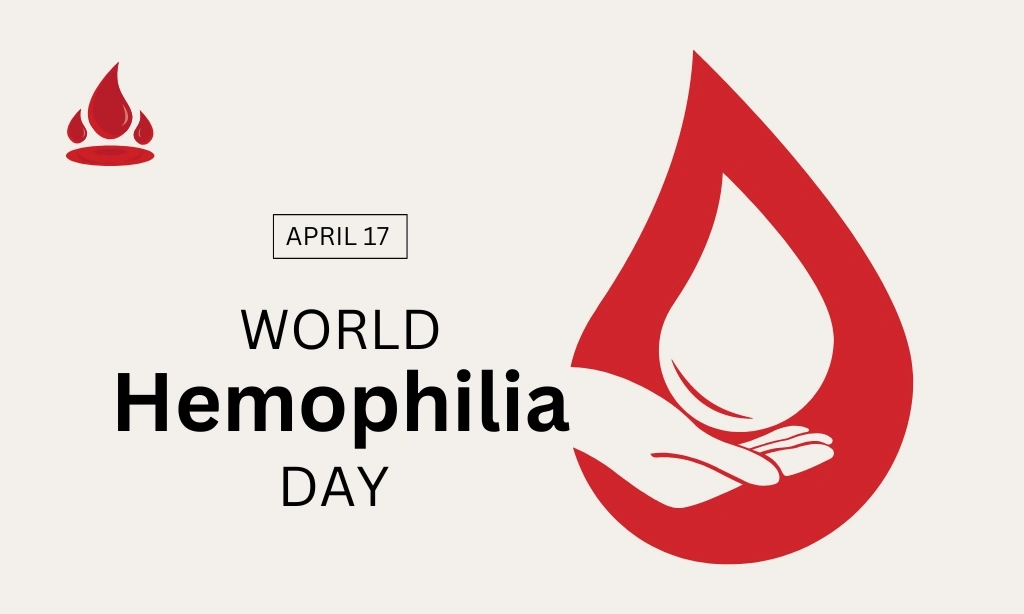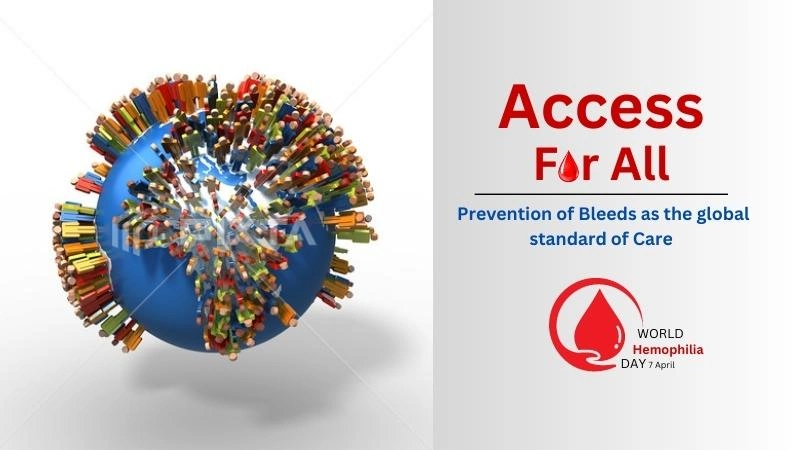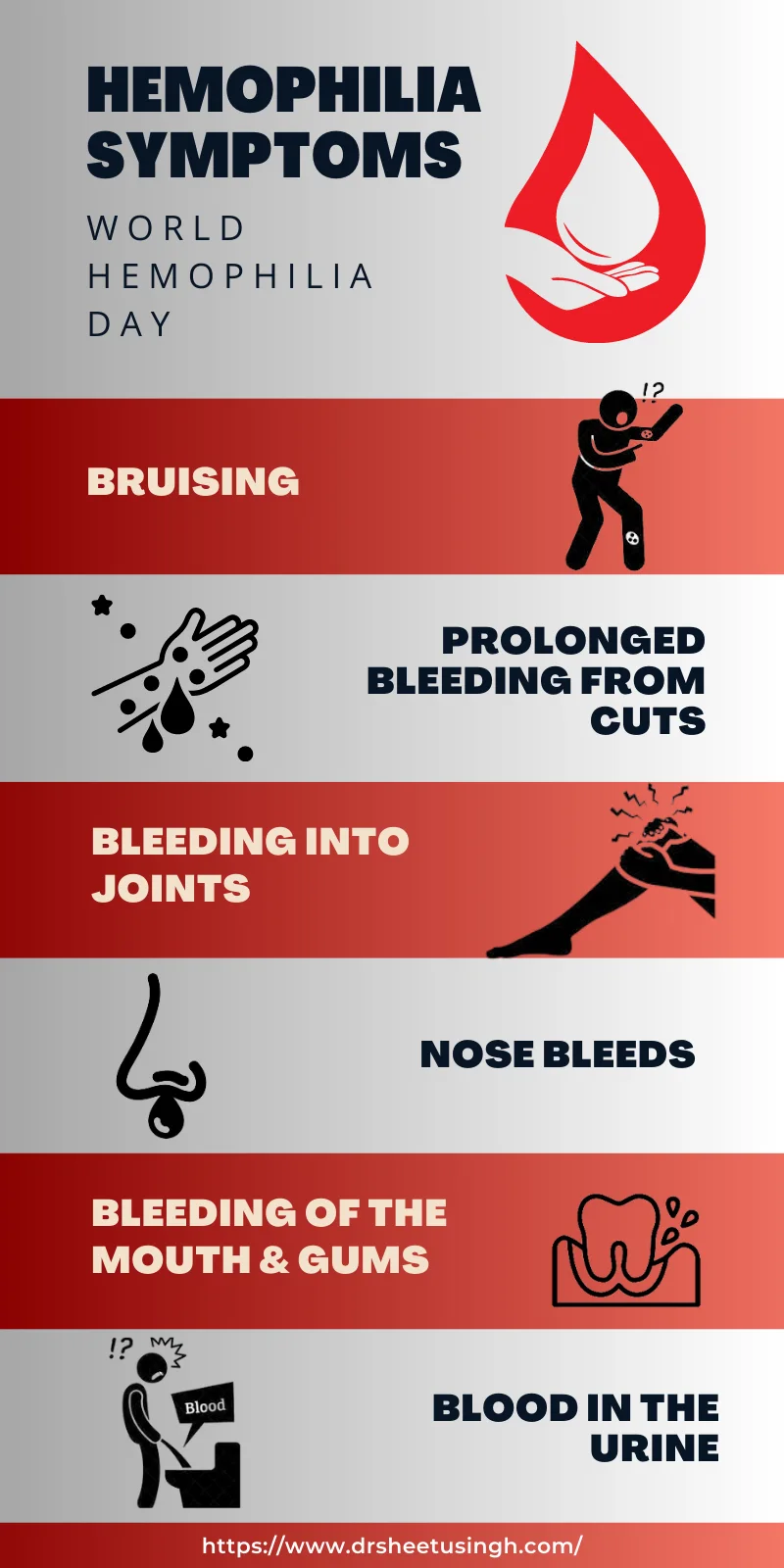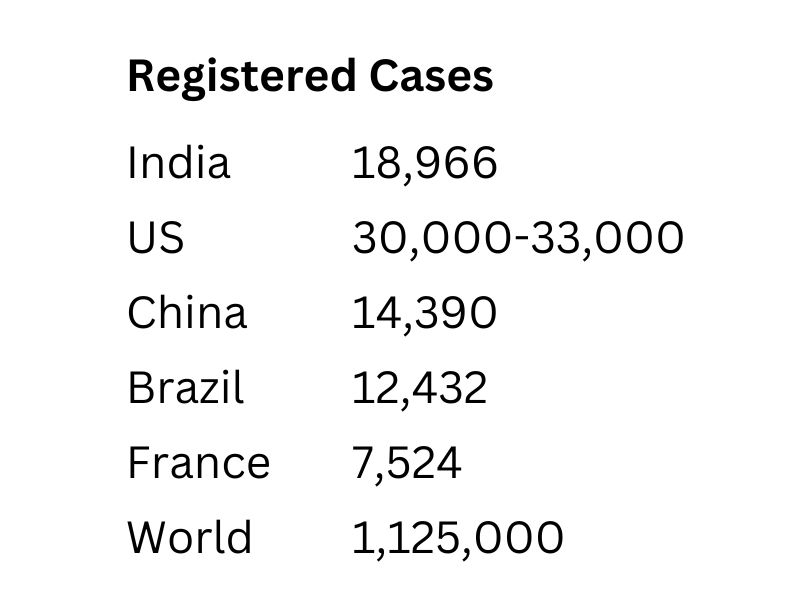World Hemophilia Day 17 April 2023, History, Theme, Symptoms, Treatment and Celebration

World Hemophilia Day is celebrated on 17th April every year, seeking to improve awareness of hemophilia and other inherited bleeding disorders. The day is celebrated in honor of Frank Schnabel, founder of the World Federation of Haemophilia (WFH). The meta-analysis revealed that the inherited bleeding disorder affects over 1,125,000 men worldwide, with 418,000 suffering from a severe form of the disease that often goes undiagnosed. This represents a significant increase from the previous estimate of 400,000 individuals globally with the disorder.
Haemophilia is a medical disorder, mainly inherited, in which the capacity of blood to clot is substantially decreased so that even a little injury can produce major bleeding. Haemophilia is caused by a mutation or change, in one of the genes, that provides instructions for manufacturing the clotting factor proteins needed to generate a blood clot.
What is The World Federation of Haemophilia (WFH)?
The World Federation of Hemophilia (WFH) is an international non-profit organization that is dedicated to improving the lives of people with hemophilia and other inherited bleeding disorders. Some key facts about the WFH include:
- The WFH was founded in 1963 and is based in Montreal, Canada.
- The organization has a global network of member organizations in more than 140 countries.
- The WFH works to improve diagnosis, treatment, and care for people with hemophilia and other bleeding disorders through a range of programs and initiatives.
- The WFH advocates for access to safe and effective treatment for all people with bleeding disorders, regardless of where they live or their ability to pay.
- The WFH is committed to advancing research and education in the field of bleeding disorders to improve outcomes for patients.
- The WFH organizes World Hemophilia Day, which is celebrated annually on April 17 to raise awareness about bleeding disorders and the challenges faced by people living with them.
- The mission of WFH is to improve and sustain care for people with inherited bleeding disorders worldwide.
World Hemophilia Day Theme
This year The International theme is “Access for All: Prevention of Bleeds as the global standard of Care”. The purpose is to increase access to treatment and care with an emphasis on better management and prevention of bleeds for all people with bleeding disorders.

What is Hemophilia?
Hemophilia is a genetic disorder that affects the body’s ability to clot blood properly. People with hemophilia have low levels of certain clotting factors, which are proteins in the blood that help control bleeding. This means that they may bleed for a longer time than others after an injury, or they may bleed internally without any obvious injury.
Due to the genetic mechanisms responsible for determining the sex of a child, hemophilia is more prevalent among males than females. It is a quite rare disease, every 1 in 10,000 people is born with it.
Types of Hemophilia
There are two main types of hemophilia:
1. Hemophilia A: Hemophilia A is the most common form and is caused by a deficiency of clotting factor VIII.
2. Hemophilia B: Hemophilia B, also known as Christmas disease, is caused by a deficiency of clotting factor IX.
Both types are inherited, meaning they are passed down from parent to child through their genes.
Symptoms | World Hemophilia Day
Hemophilia is typically diagnosed in childhood, and symptoms can range from mild to severe depending on the level of clotting factor present in the blood. Here are several symptoms of hemophilia, which have been described below:
- There is bleeding into the joints and muscles
- Big bruises or nosebleeds
- Spontaneous bleeding (sudden bleeding inside the body for no clear reason)
- Prolonged bleeding after getting a cut, removing a tooth, or having surgery
- The severity of hemophilia symptoms can vary depending on the type of hemophilia and the individual’s clotting factor levels.
- People with severe hemophilia may experience frequent and severe bleeding episodes, while those with mild hemophilia may only experience bleeding symptoms after surgery or significant injury.
- Other symptoms of hemophilia may include swelling, pain, stiffness, and limited range of motion in the affected joints.



Treatment
With proper treatment and management, people with hemophilia can live relatively normal and healthy lives. Here are some treatments for Hemophilia which have been given below:
- Replacement theory is the primary treatment for hemophilia. Treatment for hemophilia typically involves replacing the clotting factors that are missing or not working properly in the blood.
- Concentrates of clotting factor VIII (for Haemophilia A) or clotting factor IX (for Haemophilia B) are slowly dripped or injected into a vein. These infusions help to replace the clotting factor, that is low or missing.
- In addition to clotting factor replacement therapy, people with hemophilia may also need to take medications to prevent bleeding or to manage pain.
- Other treatments for hemophilia may include physical therapy, which can help improve joint mobility and prevent joint damage.
- It is important for people with hemophilia to work closely with their healthcare providers to develop a comprehensive treatment plan that meets their individual needs.
Indian Scenario of Haemophilia
- The World Federation of Hemophilia’s 2017 Annual Global Survey reported that there were over 196,000 people living with hemophilia worldwide in that year.
- India had the highest number of cases among country-wise data, with nearly 19,000 reported cases.
- It is estimated that around 80% of cases are unreported, indicating that the actual number of people with hemophilia may be close to 200,000.



Registered Cases
India – 18,966
US – 30,000-33,000
China – 14,390
Brazil – 12,432
France – 7,524
World – 1,125,000
A study by The American Journal of Managed Care (AJMC) found that, per 100,000 males, there are:
- 17.1 cases for all severities of hemophilia A
- 6.0 cases of severe hemophilia A
- 3.8 cases for all severities of hemophilia B
- 1.1 cases for severe hemophilia B
Per 100,000 males, the prevalence at birth is:
- 24.6 cases for all severities of hemophilia A
- 9.5 cases of severe hemophilia A
- 5.0 cases for all severities of hemophilia B
- 1.5 cases of severe hemophilia B
People with hemophilia who are born in upper-middle-income countries will have a 64% reduction in their chances of living a normal lifespan with good quality of life, while those born in middle-income countries will have a 77% reduction. In low-income countries, the reduction can be as high as 93%.
How to Celebrate World Hemophilia Day
Numerous events are organized every year on World Hemophilia Day, filled with educational presentations and other events that promote awareness of the disease and those who suffer from it. If you’re unable to attend, you could consider sending a donation to the World Federation of Hemophilia to assist support their fight against this crippling disorder, especially in the poorest parts of the world.
Another thing you could do is find the World Federation of Hemophilia’s Facebook page and proceed to share some of the many infographics they post in order to help your Facebook friends become more informed as well.
Event of World Hemophilia Day
World Hemophilia Day aids in the recruitment of volunteers for the world federation of Hemophilia as well as the fundraising of funds for patients who cannot afford hemophilia treatment. Every year on World Hemophilia Day, a variety of activities, including lectures and other activities, are planned to raise awareness of the condition and those affected by it.
By bringing hemophilia and other hereditary bleeding diseases to the attention of policymakers, we can improve long-term and equitable access to care and treatment. The Covid-19 epidemic and the situation in Ukraine continue to touch the globe, but one thing hasn’t changed: we are still in this together and will always be more potent as a community in our shared purpose of “treatment for all”.
FAQs
What is the significance of World Hemophilia Day?
Every year on April 17th, World Hemophilia Day is celebrated. It is celebrated all over the world as a day of Awareness for Hemophilia (sometimes written as haemophilia) and linked with bleeding disorders, as well as the World Federation of Hemophilia founder Frank Schnabel’s birthday.
Who does hemophilia affect the most?
Both two major forms of hemophilia occur more commonly in males than in females. The most common type of condition is Hemophilia A; 1 in 4,000 to 1 in 5,000 males all over the world are born with this disorder. Hemophilia B occurs in approx 1 in 20,000 newborn males all over the world.
How do we celebrate World Hemophilia Day?
To show your support for World Hemophilia Day and those affected by bleeding disorders, light a red lamp in your home, office, or local landmark. This simple gesture can help raise awareness about the challenges faced by individuals with bleeding disorders.
Why male are more affected by hemophilia?
In males, there is only one copy of most genes on the X chromosome, while females have two copies. This makes males more susceptible to X-linked genetic disorders such as hemophilia. Hemophilia is caused by a mutation in either the factor VIII or factor IX gene on the X chromosome. If a male inherits an affected X chromosome with a mutation in either of these genes, he will develop the disease.
What is unique about hemophilia?
Hemophilia is a genetic blood disorder that affects clotting and leads to slow or stop clotting, resulting in prolonged bleeding. This condition arises when there is a deficiency in the normal amount of clotting factors that aid in blood coagulation. Healthcare providers manage hemophilia by replenishing the deficient clotting factors to restore the blood’s ability to clot effectively.

